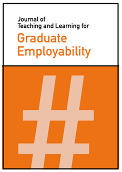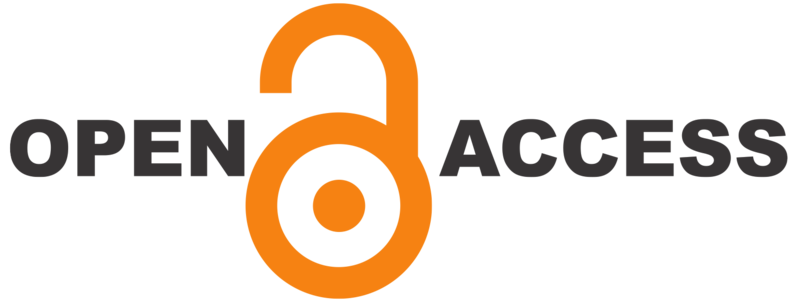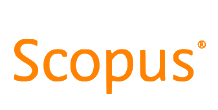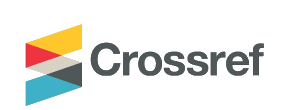A novel employability embedding framework for three-year bachelor’s programs
DOI:
https://doi.org/10.21153/jtlge2023vol14no1art1604Keywords:
employability embedding, e-portfolioAbstract
Employability skills and capabilities are equally important as academic and technical knowledge in the current job market. Consequently, universities are increasingly focusing on providing employability skills to their students. While universities in Australia are experimenting with various methods for employability embedding, we could not find any framework for embedding employability at the course level. Mapping employability at the course level is non-trivial but necessary to scaffold employability.
e-portfolios form an integral part of employability; however, it is not well defined in the literature how to embed and assess an e-portfolio into a tertiary academic program. Unless an e-portfolio is embedded and assessed in the academic program, the uptake by the students cannot be guaranteed; hence students miss out on the benefits of such an important tool. This paper addresses these two key challenges. It develops an employability embedding framework targeted for a three-year bachelor’s program. This framework also enables the embedding and assessment of e-portfolios. The framework is novel as it offers a scaffolded and organic way to embed employability
Metrics
References
AdvanceHE (2019). Essential frameworks for enhancing student success. https://www.advance-he.ac.uk/sites/default/files/2020-05/Enhancing%20Student%20Success%20in%20Higher%20Education%20Framework.pdf
Allison, J., Harvey, C., & Nixon, I. (2002). Enhancing employability: A long term strategic challenge. LTSN Generic Centre. https://www.qualityresearchinternational.com/esecttools/esectpubs/Allisonstrategic.pdf
Artess, J., Mellors-Bourne, R., & Hooley, T. (2017). Employability: A review of the literature 2012-2016. https://repository.derby.ac.uk/download/53662b1f546fe4517884222095a111b1af48b88c2b832aae8eccbb5c0f7d634b/1055767/employability_a_review_of_the_literature.pdf
Bennett, D. (2019). Graduate employability and higher education: Past, present and future. HERDSA Review of Higher Education, 5, 31-61.
Buruk, P., Şimşek, Ö. F., & Kocayörük, E. (2017). Higher-order traits and happiness in the workplace: The importance of occupational project scale for the evaluation of characteristic adaptations. The Journal of general psychology, 144(4), 245-263. https://doi.org/10.1080/00221309.2017.1374117
Carbone, A., Hamilton, M., & Jollands, M. (2015). Moving towards the future of teaching pedagogies and learning paradigms: Understanding the 21st century employability challenges in the ICT industry. Paper presented at the Proceedings of the 9th International Conference on Researching Work and Learning.
Cox, S., & King, D. (2006). Skill sets: an approach to embed employability in course design. Education + Training, 48(4), 262-274. https://doi.org/10.1108/00400910610671933
Department of Education, Skills and Employment (2021). NPILF Pilot (2022-24) (Guidance Document). Australian Government. https://www.education.gov.au/download/11048/npilf-guidance-document/21153/document/pdf.
Department of Education, Employment and Workplace Relations. (2010). The Australian blueprint for career development. Ministerial Council for Education, Early Childhood Development and Youth. Commonwealth of Australia. https://apo.org.au/sites/default/files/resource-files/2009-12/apo-nid30320.pdf
Departments of Industry, Innovation, Climate Change, Science, Research and Tertiary Education (DIISRTE) and Education, Employment and Workplace Relations. (2013). Core skills for Work Developmental Framework. Commonwealth of Australia. https://cica.org.au/wp-content/uploads/Core-Skills-for-Work-Developmental-Framework-2013.pdf
Dundalk Institute of Technology (2021). Embedding Employability Framework - A Guide for DkIT. (Draft 23/06/2021). https://web.archive.org/web/20211005025420/https://www.dkit.ie/assets/uploads/documents/Careers_Resources/DkIT_Embedding_Employability/DkIT-Employability-Framework.pdf
Fugate, M., Kinicki, A. J., & Ashforth, B. E. (2004). Employability: A psycho-social construct, its dimensions, and applications. Journal of Vocational behavior, 65(1), 14-38. https://doi.org/10.1016/j.jvb.2003.10.005
Harvey, C., Bertolo, E., & Byrne, L. (2017). Integrating research and knowledge exchange in the Science Undergraduate Curriculum: embedding employability through research-involved teaching. Global Voices in Higher Education, 111. https://doi.org/10.5772/intechopen.68511
Healy, M., Hammer, S., & McIlveen, P. (2022). Mapping graduate employability and career development in higher education research: A citation network analysis. Studies in Higher Education, 47(4), 799-811. https://doi.org/10.1080/03075079.2020.1804851
Jackson, D. (2016). Modelling graduate skill transfer from university to the workplace. Journal of education and work, 29(2), 199-231. https://doi.org/10.1080/13639080.2014.907486
Kemp, S. (2009). Embedding employability and employer engagement into postgraduate teaching: a case study from ‘environmental management systems.’ Planet, 21(1), 47-52. https://doi.org/10.11120/plan.2009.00210047
Law, B., & Watts, A. G. (2003). The DOTS analysis. National Institute for Careers Education and Counselling, The Career-Learning NETWORK.
Lees, D. (2002). Graduate employability-literature review. LTSN Generic Centre York. https://www.qualityresearchinternational.com/esecttools/esectpubs/leeslitreview.pdf
Lent, R. W., Brown, S. D., & Hackett, G. (2002). Social cognitive career theory. In D Brown (Ed.), Career choice and development, (4th ed.), pp. 255-311. Jossey-Bass.
Lorenzo, G., & Ittelson, J. (2005). An overview of e-portfolios. Educause Learning Initiative, 1(1), 1-27. http://www.edpath.com/index_htm_files/Overview%20of%20ePortfolios.pdf
McIlveen, P. (2018, January). Defining employability for the new era of work: A submission to the Senate Select Committee on the Future of Work and Workers. Canberra, Australia: The Senate. https://doi.org/10.13140/RG.2.2.23333.60646
Moumen, A., & Mejjad, N. (2021). Graduates' employability: An exploratory Literature Review. 3rd International Conference on Quantitative and Qualitative Methods for Social Sciences (QQR’21), 119. https://doi.org/10.1051/shsconf/202111905010
Muldoon, R. (2009). Recognizing the enhancement of graduate attributes and employability through part-time work while at university. Active Learning in Higher Education, 10(3), 237-252. https://doi.org/10.1177/1469787409343189
Nisha, S. M., & Rajasekaran, V. (2018). Employability skills: A review. IUP Journal of Soft Skills, 12(1), 29-37.
Owens, J., & Tibby, M. (2014). Enhancing employability through enterprise education: Examples of good practice in higher education. https://eprints.worc.ac.uk/id/eprint/3693
Patton, W., & McMahon, M. (2014). Career development and systems theory: Connecting theory and practice. Springer. https://doi.org/10.1007/978-94-6209-635-6
Pillai, S., Khan, M. H., Ibrahim, I. S., & Raphael, S. (2012). Enhancing employability through industrial training in the Malaysian context. Higher Education, 63(2), 187-204. https://doi.org/10.1007/s10734-011-9430-2
Pool, L. D., Qualter, P., & Sewell, P. J. (2014). Exploring the factor structure of the CareerEDGE employability development profile. Education+ Training, 56(4), 303-313. https://doi.org/10.1108/ET-01-2013-0009
Quality Assurance Agency for Higher Education. (2009). Learning from ELIR 2003-07: Emerging Approaches to Employability and Personal Development Planning. https://dera.ioe.ac.uk//id/eprint/451
Shivoro, R., Shalyefu, R. K., & Kadhila, N. (2017). Embedding graduate employability attributes in management sciences curricula: A case of two Namibian universities. Journal of Teaching and Learning for Graduate Employability, 8(1), 123-136. https://doi.org/10.21153/jtlge2017vol8no1art639
Sumanasiri, E. G. T., Yajid, M., & Khatibi, A. (2015). Review of literature on graduate employability. Journal of Studies in Education, 5(3), 75-88. https://doi.org/doi:10.5296/jse.v5i3.7983
Tang, K. N. (2019). Beyond Employability: Embedding Soft Skills in Higher Education. Turkish Online Journal of Educational Technology-TOJET, 18(2), 1-9. https://files.eric.ed.gov/fulltext/EJ1211098.pdf
Tran, T. T. (2016). Enhancing graduate employability and the need for university enterprise collaboration. Journal of Teaching and Learning for Graduate Employability, 7(1), 58-71. https://doi.org/10.21153/jtlge2016vol7no1art598
University of Southern Queensland (USQ) Careers and Employability. (2020). Careers and Employability Learning Toolkit (Version 2), University of Southern Queensland. https://research.usq.edu.au/item/yy7q8/cel-toolkit
Weligamage, S. S. (2009). Graduates’ employability skills: Evidence from literature review. Proceedings of the Association of Southeast Asian Institutions of Higher Learning (ASAIHL), Cambodia, p115-125. https://faculty.ksu.edu.sa/sites/default/files/weliganmage_2009_graduates_emplyability_skills_evidence_from_literature_review.pdf
White, A. (2016). Embedding an employability skills framework into a postgraduate coursework program. Proceedings of The Australian Conference on Science and Mathematics Education, Brisbane, (pp. 142-143). https://openjournals.library.sydney.edu.au/index.php/IISME/article/view/10780
Williams, S., Dodd, L. J., Steele, C., & Randall, R. (2016). A systematic review of current understandings of employability. Journal of education and work, 29(8), 877-901. https://doi.org/10.1080/13639080.2015.1102210
Winberg, C., Bramhall, M., Greenfield, D., Johnson, P., Rowlett, P., Lewis, O., . . . Wolff, K. (2020). Developing employability in engineering education: a systematic review of the literature. European Journal of Engineering Education, 45(2), 165-180. https://doi.org/10.1080/03043797.2018.1534086
Woodley, C., & Sims, R. (2011). EPortfolios, professional development and employability: some student perceptions. Campus-wide Information systems, 28(3), 164-174. https://doi.org/10.1108/10650741111145698
Zainudden, D., Broom, M., Nousek-McGregor, A., Stubbs, F., & Veitch, N. (2022). Embedding 21st century employability into assessment and feedback practice through a student–staff partnership. Access Microbiology, 4(3), 000329. https://doi.org/10.1099/acmi.0.000329












